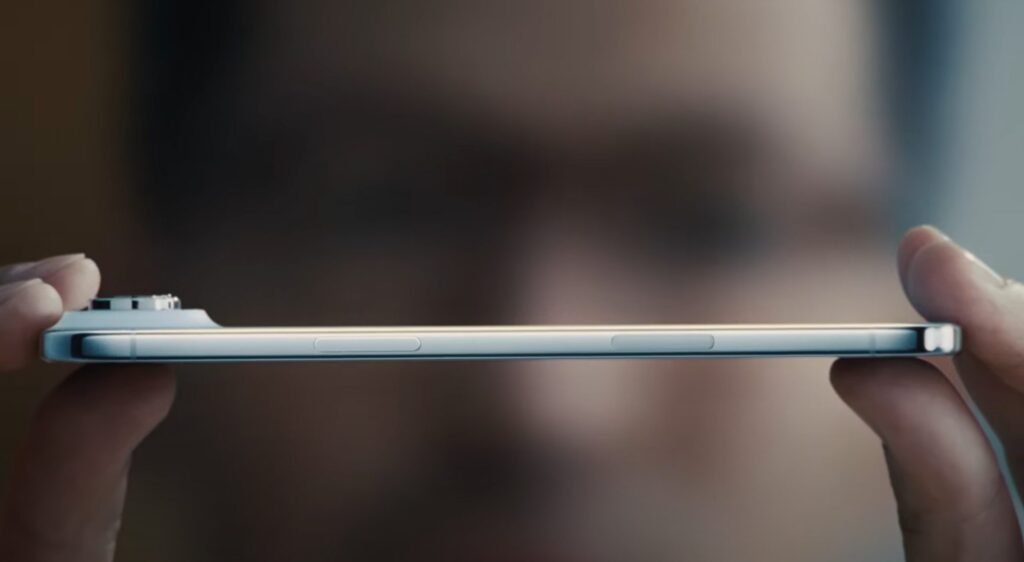

Apple has announced four new iPhones today. Those devices are the Apple iPhone 17, iPhone Air, iPhone 17 Pro, and iPhone 17 Pro Max. We’ve covered the two ‘Pro’ models already, in a separate post, so we’ll focus on the vanilla and ‘Air’ models here.
The Apple iPhone 17 is very similar to its predecessor, but bigger
The iPhone 17 looks basically the same as its predecessor, but it’s a little bit larger, due to a larger display. It is made out of aluminum and glass, and has two cameras on the back. A flat display is included on the front, with the Dynamic Island on top.



The two cameras on the iPhone 17 are located inside a pill-shaped camera island, and they have a vertical orientation in the top-left corner of the phone’s back. The back side on the phone is flat, as is its frame.
Apple’s extremely thin iPhone Air has a titanium shell
The iPhone Air, on the other hand, is made out of titanium and glass. It has a flat display as well, with a Dynamic Island on top. The frame of this phone is also flat, for the most part.
When you flip it around, you’ll notice an entirely different backplate, though. It is flat, but there is a camera bar at the top. That camera bar is horizontal, and inside it sits a single camera. Apple had to do it this way due to the fact how thin the phone is.




That thinness is the main selling point of this smartphone. The device is only 5.64mm thick, which makes it notably thinner than the iPhone 17, which measures 7.95mm. It is also lighter despite the fact it has a notably larger display.
Ceramic Shield 2 is here with better scratch protection
Speaking of displays, the iPhone 17 comes with a 6.3-inch Super Retina XDR display, while the iPhone Air has a 6.5-inch Super Retina XDR display. Both of them have an adaptive refresh rate of up to 120Hz (1-120Hz). Ceramic Shield 2 protects both displays, and it is more scratch-resistant.
Both smartphones are also fueled by the same processor, the Apple A19. That is the company’s new chip made on a 3nm processor. The ‘Pro’ iPhones utilize the Apple A19 Pro chip. Both the vanilla and Air iPhones ship with 8GB of RAM, by the way.
A 128GB storage model is no longer available, at least not in the US
What about storage? Well, the iPhone 17 launched in 256GB and 512GB flavors, while the iPhone Air comes in 256GB, 512GB, and 1TB options. They’re all non-expandable.
Battery capacities have not been mentioned. The iPhone 17 is rumored to have a 3,600mAh unit, while the iPhone Air allegedly has a 2,600mAh battery. As I said, that is all not confirmed, so take it with a grain of salt.
Both devices support MagSafe wireless charging
Both smartphones support 30W wired charging. The iPhone 17 supports 25W MagSafe wireless charging, while the iPhone Air is limited to 20W MagSafe wireless charging. A charger is not included in the retail box.
Both devices have stereo speakers, while both of them are also IP68 certified. The iPhone 17 has a 48-megapixel main camera and a 48-megapixel ultrawide camera. The iPhone Air is limited to a single 48-megapixel wide camera on the back. Both phones include an 18-megapixel selfie camera.
The Apple iPhone 17 comes in five color options. Those colors are: Black, Lavender, Miss Blue, Sage, and White. The iPhone Air, on the other hand, has been announced in four color variants. Those colors are: Cloud White, Light Gold, Sky Blue, and Space Black.


The pricing starts at $899
The iPhone 17’s 256GB storage variant costs $799, while the 512GB model is priced at $899. The iPhone Air, on the other hand, will set you back $999 for the base model with 256GB of storage. The 512GB and 1TB storage options are priced at $1,199 and $1,399, respectively.
All of these variants will become available to pre-order on September 12. They will go on sale on September 19, so you’ll have a week to pre-order them, basically.
The post Apple’s iPhone 17 & iPhone Air Are Here — One’s Thin, One’s Familiar appeared first on Android Headlines.
